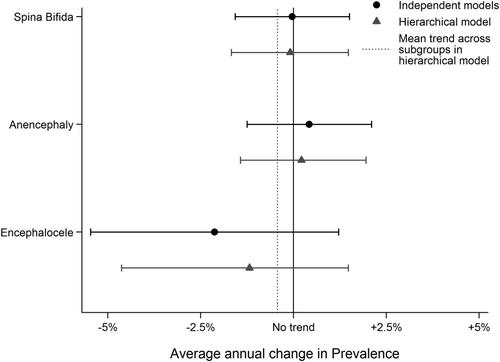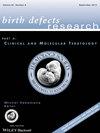Use of hierarchical models to analyze European trends in congenital anomaly prevalence
Abstract
Background
Surveillance of congenital anomalies is important to identify potential teratogens. Despite known associations between different anomalies, current surveillance methods examine trends within each subgroup separately. We aimed to evaluate whether hierarchical statistical methods that combine information from several subgroups simultaneously would enhance current surveillance methods using data collected by EUROCAT, a European network of population-based congenital anomaly registries.
Methods
Ten-year trends (2003 to 2012) in 18 EUROCAT registries over 11 countries were analyzed for the following groups of anomalies: neural tube defects, congenital heart defects, digestive system, and chromosomal anomalies. Hierarchical Poisson regression models that combined related subgroups together according to EUROCAT's hierarchy of subgroup coding were applied. Results from hierarchical models were compared with those from Poisson models that consider each congenital anomaly separately.
Results
Hierarchical models gave similar results as those obtained when considering each anomaly subgroup in a separate analysis. Hierarchical models that included only around three subgroups showed poor convergence and were generally found to be over-parameterized. Larger sets of anomaly subgroups were found to be too heterogeneous to group together in this way.
Conclusion
There were no substantial differences between independent analyses of each subgroup and hierarchical models when using the EUROCAT anomaly subgroups. Considering each anomaly separately, therefore, remains an appropriate method for the detection of potential changes in prevalence by surveillance systems. Hierarchical models do, however, remain an interesting alternative method of analysis when considering the risks of specific exposures in relation to the prevalence of congenital anomalies, which could be investigated in other studies. Birth Defects Research (Part A) 106:480–10, 2016. © 2016 Wiley Periodicals, Inc.


 求助内容:
求助内容: 应助结果提醒方式:
应助结果提醒方式:


